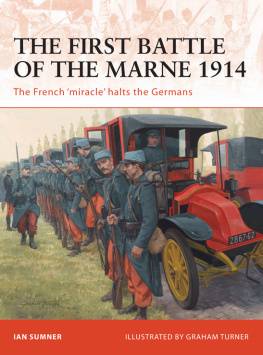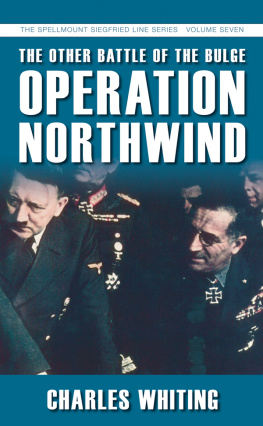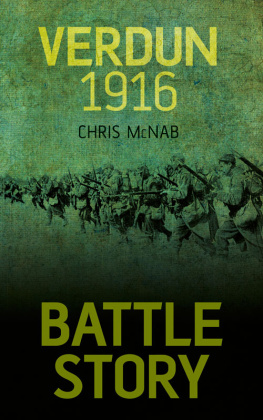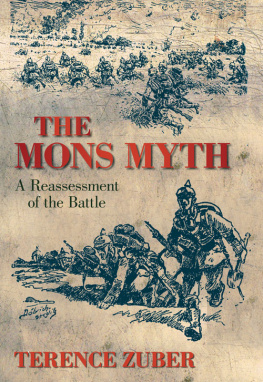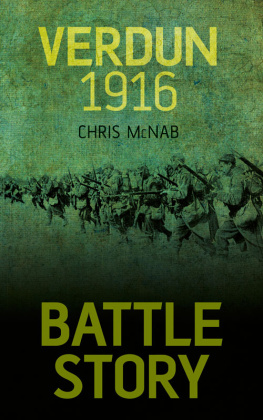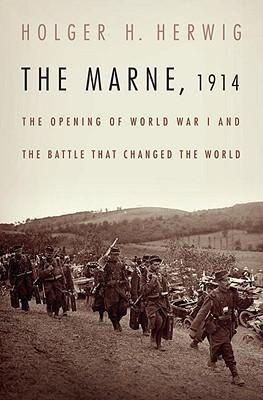
With the permission of the Bavarian Army Archive
Bayerisches Hauptstaatsarchiv
Abt. IV Kriegsarchiv
Leonrodstrae 57
80636 Mnchen
www.gda.bayern.de
Contents
The Peacetime Army
Mobilisation
Initial Deployment
Deployment of the Sixth Army and First Combat to 13 August
The Cavalry Charge at Gerden, 11 August
Badonviller, 12 August
German and French War Plans
Diespach, 14 August
7th Army to 17 August
6th Army Withdrawal, 1417 August
Cirey, 14 August
Initial Advance: Combat in the Vosges, 1819 August
Weiler,18 August
Weier im Thal and Giragroutte, 19 August
St Martin, 19 August
18 and 19 August in Lorraine
Mittersheim, 18 August
Liedersingen, 19 August
The Battle of Lorraine, 20 August
Delm
Mrchingen
LautersingenSt Johann
Saarburg
The Pursuit on 21 August
The Pursuit on 22 August
Maixe
Autrepierre
The Battle in the Middle Vosges
XIV RK, 2022 August
30 RD at Steige, 20 August
Roggensbach-Salzheim, 2122 August
Bavarian Ersatz Division and 2 Landwehr Brigade, 2022 August
St Kreuz, 20 August
Markirch, 21 August
First Conquest of the Col de Ste Marie, 22 August
Colmar and Mhlhausen, 2022 August
Continuation of the Pursuit 2326 August
23 August
Montigny
24 August
II b. AK Attack Over the Meurthe: BlainvilleRemenoville
I b. AK at Baccarat
The End of the Pursuit: The Front Stabilises, 25 and 26 August
25 August
HovilleMaixeLomont
Withdrawal of II b. AK behind the Mortagne
Lamath, 25 August
Bazien
26 August
Events North of Lunville
Stabilisation of the II b. AK Position, South-east of Lunville
Xermamnil
Doncires
Conquest of Fort Manonviller
The Breakthrough Over the Vosges to the Meurthe, South of St Di
23-27 August
30 RD Advance Over the Col dUrbeis, 23-25 August
Advance of the Bavarian Ersatz Division over the Col de St Marie to Wisembach, 23-25 August
Setback on the Col de Ste Marie, 23 August
Col de Ste Marie Finally Taken, 24 August
Advance Through Wisembach, 25 August
General Advance to the Meurthe and the Capture of St Di, 26-27 August
Coinches, 26 August
St Di-Saulcy, 27 August
The Rhine Valley South of Schlettstadt, 23-26 August
Deadlock and New Missions, End of August to Beginning of September
Quiet North of Lunville
II b. AK, the Sixth Army Problem Child
I b. AK at Xaffvillers-Anglemont, 27-28 August
Continuation of the Battles at St Di, 28 August
29 August
30 August
31 August
1 September
2 September
Advance into the Vosges West of Colmar and into the Upper Alsace
Eschelmer-Zell-Drei hren, 2 September
Renewing the Offensive, 3-8 September
Upper Alsace and the Vosges, 3-8 September
Unsuccessful Attack on the Crest of the Vosges
30 RD, Bavarian ED, 3-8 September
3 September
4 September
5 September
Defense Against French Attacks 6-8 September
Between Lunville and the West Slope of the Vosges, 3-8 September
The Attack on the Nancy Position, 3-8 September
Preparations
The First Step, 4-5 September
The Second Step, 7-8 September
Breaking Off the Battle and Withdrawal, 9-15 September
30 RD and Bavarian ED at Senones-Saal, 13-14 September
Casualties
Analysis
This book recounts not only the first battle of the First World War, but also the only battle in which the Bavarian Army, under Bavarian leadership, fought independently. Later it would be split up to fight as Bavarian corps, and even divisions, mixed with other formations of the German Army. All of the source material available in the Bavarian State archives in 1929, principally war diaries and after-action reports, was drawn upon. These were usually meagre, incomplete and inexact.
Every attempt was made to present the events accurately, even when this was sometimes not flattering. The only way that the purpose of all military history, which is to instruct future generations, can be accomplished and fostered is by an unvarnished presentation of the events. In particular, the German people have a serious need to investigate the reasons for its defeat, and to recognise and acknowledge the mistakes that were made. No criticism can be made of the troop units and their leaders. They were all motivated by the desire to do their best. Considering the enormous friction that accompanies everything in war, errors and mistakes cannot be avoided.
Names are mentioned only to the limited degree that the source document itself requires. In our present time, the cause is to be placed above the individual, the deed above the name. In the last analysis, every units accomplishments were a joint effort.
Various considerations have caused the Bavarian Army Archive to limit its description of the deeds of the non-Bavarian units. Nevertheless, their contribution is always recognised to the degree necessary to understand the continuity and form of the overall Battle of Lorraine. The Bavarian Army Archive thanks the Reichsarchiv in Potsdam for the assistance it provided in this matter.
Notes
See Translator/Editor Preface.
Reichsarchiv , Der Weltkrieg, Band I, Die Grenzschlachten im Westen (Berlin, 1925); Band III, Der Marnefeldzug. Von Der Sambre bis zur Marne (Berlin, 1926); Band IV, Der Marnefeldzug. Die Schlacht (Berlin, 1926).
Ministre de la Guerre, Les Armes Franaises dans la Grande Guerre , tome I, vols 1 and 2 and Annexes (Paris, 19235).
Dubois, Deux ans de Commandemment sur le Front de France. I Le 9e Corps . Palat La Grande Guerre sur la Front Occidental.
The first great battle of the First World War began with an offensive by the French First and Second Armies into German Lorraine on 14 August 1914. The first massive clash of arms in the Great War came when the Germans counter-attacked in Lorraine on 20 August, a stunning German tactical victory, followed by a disorderly French retreat back into France.
The battle in Lorraine, and not the later battles in the Ardennes or northern Belgium, had been anticipated by both sides since 1872. Indeed, until Joffre decided to conduct the main French offensive into Belgium on 2 August, he had always reserved the option of conducting the decisive offensive in Lorraine. As late as 15 August, Moltke believed that the main French offensive would be made in Lorraine. Nevertheless, the only references to this battle in French, English or German histories are short one- or two-page summaries in accounts of the Marne Campaign: most of these are uninformative (generally ascribing German success to heavy artillery) and some positively erroneous.
There has only been one serious monograph on this battle: Karl Deuringers Die Schlacht in Lothringen und in den Vogesen 1914 ( The Battle in Lorraine and the Vosges 1914 ), published by the Bavarian Army Archive ( Bayerisches Kriegsarchiv ) in 1929. The challenge as translator and editor was to condense Die Schlacht in Lothringen into something that could be published today.
Lorraine was defended by the German Sixth Army, almost all of whose major units were Bavarian, commanded by the Bavarian Crown Prince. This would also be the last time that the Bavarian Army, whose history went back to the early seventeenth century, would fight as a unit. After Lorraine, the Bavarian corps would be intermixed with those of Prussia and the other German states. The Bavarian Army Archive wanted to record this last great battle in an appropriate manner, so Deuringer produced a two-volume, 893-page work with 74 maps (including a total of seven extra large map sheets in pockets at the back of both volumes). Deuringer chronicled the entire Bavarian battle in Alsace-Lorraine until it was broken off by both sides in mid-September.
Next page


